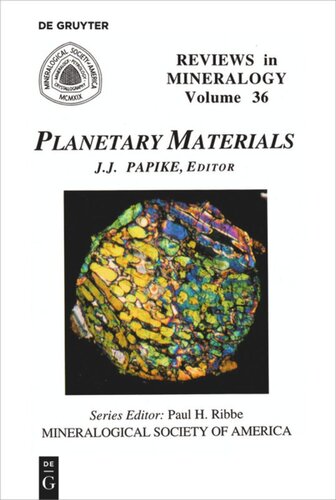

Most ebook files are in PDF format, so you can easily read them using various software such as Foxit Reader or directly on the Google Chrome browser.
Some ebook files are released by publishers in other formats such as .awz, .mobi, .epub, .fb2, etc. You may need to install specific software to read these formats on mobile/PC, such as Calibre.
Please read the tutorial at this link: https://ebookbell.com/faq
We offer FREE conversion to the popular formats you request; however, this may take some time. Therefore, right after payment, please email us, and we will try to provide the service as quickly as possible.
For some exceptional file formats or broken links (if any), please refrain from opening any disputes. Instead, email us first, and we will try to assist within a maximum of 6 hours.
EbookBell Team

4.4
62 reviewsVolume 36 of Reviews in Mineralogy presents a comprehensive coverage of the mineralogy and petrology of planetary materials. The book is organized with an introductory chapter that introduces the reader to the nature of the planetary sample suite and provides some insights into the diverse environments from which they come. Chapter 2 on Interplanetary Dust Particles (IDPs) and Chapter 3 on Chondritic Meteorites deal with the most primitive and unevolved materials we have to work with. It is these materials that hold the clues to the nature of the solar nebula and the processes that led to the initial stages of planetary formation. Chapter 4, 5, and 6 consider samples from evolved asteroids, the Moon and Mars respectively. Chapter 7 is a brief summary chapter that compares aspects of melt-derived minerals from differing planetary environments.